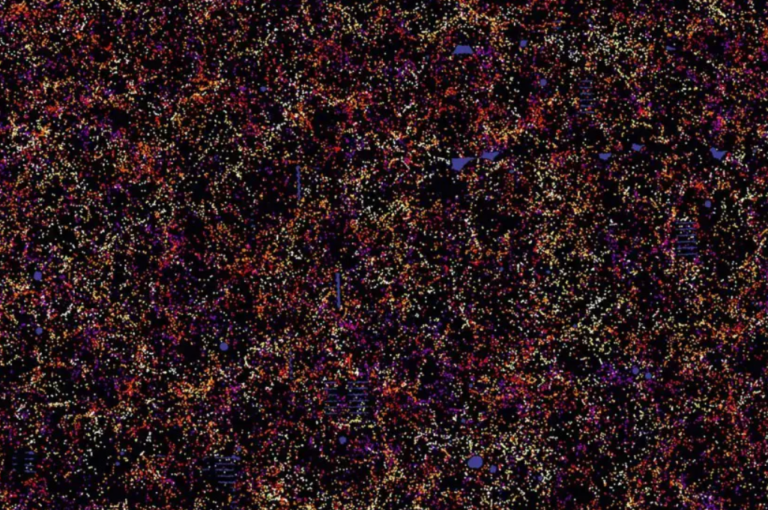3D Map of the Universe Unveils 1.2 Million Galaxies Spanning 650 Billion Cubic Light-Years
Discover how scientists created an extensive galaxy map, unraveling the mysteries of dark energy and cosmic evolution.
Scientists have designed a fresh 3D map that portion of the universe, which includes 650 billion cubic light years, revolutionising ideas of galaxy formations. This is part of the Baryon Oscillation Spectroscopic Survey and has given measurements of the expansion rate of the Universe that differ from past paradigms. In this way, making them unravel the effects of gravity on the largest scales of the universe, this work forms a basis for the future studies of dark energy and dark matter. Future tools such as the Dark Energy Spectroscopic Instrument are expected to deliver more precise surveys – and open up still more profound mysteries of the cosmos.
This picture was the work of hundreds of physicists and astronomers for over five years and is the largest and most detailed 3D map of distant galaxies depicting the dark energy which is responsible for the acceleration of the expansion of the Universe.
Jeremy Tinker, a co-coordinator from New York University who co-led the programme commented “We gathered information from 1. 2 million galaxies across a quarter of the sky to gain an insight into the structure of the universe over a volume of 650 billion cubic light years.
The study was described in the Monthly Notices of the Royal Astronomical Society. “This map has allowed us, for the first time, to get the most precise measurements for the impact of dark energy on the expansion of the Universe,” concludes Tinker, “We publish the results and the map. ”
Just as general relativity theory forecasted, the galaxies were found to be plunging towards areas of the Universe with more mass and thus more gravity.
Shirley Ho, an astrophysicist at Berkeley Lab and Carnegie Mellon University (CMU), who co-led two companion papers, highlighted the precision of their data: ’We are now to the point where we can observe how galaxies and stars combine in space and time to such a precision that we are able to put General Relativity to the test on cosmological scales. ’
The team also had to know that, in addition to dark energy, an equally insidious force – dark matter – was at work, and distinguish between the two in their observations. BOSS data from the SDSS-III made it possible to measure the rate of the Universe’s expansion, thus the amounts of dark matter and dark energy in the present-day Universe.
The clustering of galaxies is reflected in the Large Scale Structure, and BOSS reduced the size of Baryon Acoustic Oscillations (BAO) within the 3D distribution of galaxies to give the expansion rate of the Universe. This measurement was mentioned to be in its existence since 13. More than 7996 billion years ago, simultaneously with the Universe’s formation, at the time when pressure waves moved through the space.
From that point onward, astronomers could watch visibility of dark matter and dark energy in the process of the Universe expansion.
“What we have made is the biggest map to investigate the 95% of the Universe which is dark,” said Schlegel, an astrophysicist at Lawrence Berkeley National Laboratory and the BOSS principal investigator.
Dark matter in this map has galaxies pulled towards other galaxies And on large scale, dark energy is pulling the universe apart.
Rita Tojeiro of the University of St Andrews in Scotland, who co-led the BOSS galaxy clustering working group with Tinker, underscores the significance of this accomplishment for cosmology:Rita Tojeiro of the University of St Andrews in Scotland, who co-led the BOSS galaxy clustering working group with Tinker, underscores the significance of this accomplishment for cosmology:
From cosmic microwave background radiation patterns that date back to 400,000 years after the Big Bang, we see a striking resemblance with the galaxy clustering 7-12 billion years later; tracing and re-measuring a single effect will be of parametric value for cosmology.
“The tests with BOSS give rather solid base for more accurate future BAO observations, such as those expected from the Dark Energy Spectroscopic Instrument (DESI),” noted Berkeley Lab’s Director of Physics Division Natalie Roe.
‘DESI is going to build a high-resolution 3D map across an area one hundred times larger in order to accurately map out dark energy – and in effect; the destiny of the Universe. ’
Do not forget to share your opinion with us to provide you with the best posts !




0 Comments